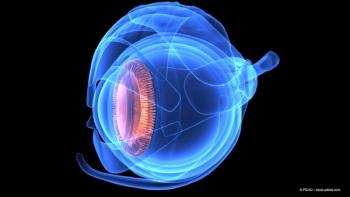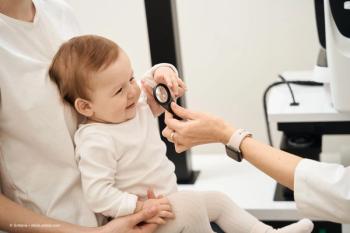
Analysis of human eye tissue from unique biorepository may lead to development of therapeutics for AMD
Researchers collaborate to study AMD through database of donor eye tissue to provide new data for study and future treatment targeting.
The first genome-wide significant study of the epigenetics of age-related macular degeneration (AMD) has yielded a trove of genetic mechanisms and pathways that are responsible for this disease. Published in Cell Genomics by scientists at the University at Buffalo, the University of Utah, Genentech, and other institutions, this research paves the way for the development of potential therapeutics.
The study identified 23 significant, genome-wide loci that are in sites that are differentially methylated in AMD caused by environmental or lifestyle factor leads to a change in one’s DNA, without altering the actual sequence of the DNA.
“This study demonstrates, for the first-time, genome-wide, significant loci have been found to be differentially methylated for AMD,” says co-senior and co-corresponding author Margaret DeAngelis, PhD, Ira G. Ross and Elizabeth Olmsted Ross Endowed Chair and professor of ophthalmology in the Jacobs School of Medicine and Biomedical Sciences at UB, adding that these genetic changes are specific to a late-stage form of the disease, for which there are very limited treatments.
The researchers found 1,000 differentially expressed genes, some of which present potential drug targets. Two novel genes were found to play a major mechanistic role in the pathophysiology of the disease.
Using a systems biology approach, the researchers characterized expression, methylation, and chromatin accessibility in both normal and diseased human tissue. They used a variety of techniques, including bulk RNA sequencing, array-based DNA methylation profiling, single-nucleus RNA-seq, and single-nucleus ATAC-seq., toanalyze gene regulation from different perspectives.
DeAngelis explains that the findings are especially significant because they are based on research conducted on rigorously phenotyped post-mortem eye tissue from normal individuals and from those who had AMD.
Unique biorepository
The research, the result of an industry collaboration, is based on a unique biorepository of post-mortem eye tissue gathered over the past decade.
“This work could not have been possible without the help of community outreach and the generous people who are willing to donate their eyes to research,” DeAngelis says. “Similar to other blinding conditions, there are no animal models which can fully recapitulate AMD, as the architecture of the human eye is unique and so is the biology. Therefore, we need access to the tissues actually affected by the disease as a first step to drill down to uncover disease mechanisms.
“It is only through understanding disease mechanisms that appropriate therapies can be developed,” she continues. “The work we present has taken over 10 years to come to fruition and was the result of rapid post-mortem tissue time collection coupled with rigorous phenotyping.”
DeAngelis explains that because degradation of human tissue begins so quickly, it is critical that donor eyes be not only rapidly obtained but also processed and phenotyped as quickly as possible. This is especially critical as scientists must separate true disease pathophysiology from the natural death processes inherent to post-mortem tissues. That meant developing a demanding and labor-intensive 24/7 on-call schedule for DeAngelis and her colleagues.
“We fine-tuned and published a standardized dissection and phenotyping protocol using a multimodal imaging approach similar to the imaging that is done on live patients, which makes our repository unique,” she says.
DeAngelis explains that most data sets to date for AMD are skewed toward neural retina, do not separate macula retina from peripheral retina, have long post-mortem interval times, and have very limited post-mortem phenotyping information of both eyes within a given donor.
In the current study, this biorepository allowed the researchers to conduct a molecular analysis of human macular tissues from 85 well-characterized donor eyes. The researchers characterized the retina, the retinal pigment epithelium (RPE), and choroid across all stages of the disease.
Disease is limited to the macula
The research demonstrates scientifically what DeAngelis says clinicians have understood for decades. “We show that AMD is in the macula,” DeAngelis says, noting that in itself is intriguing. “All the other common eye diseases (including glaucoma and diabetic retinopathy) spread throughout the whole eye, so why does AMD fixate only on the macula?”
DeAngelis and her many collaborators will now be turning their attention to these and other questions this research has brought to light — which, she adds, could only have been achieved through collaboration.
“The findings truly underscore what can be done when industry and academia collaborate and when basic scientists and clinicians partner synergistically,” she says. “No one person or group could have achieved this.”
Newsletter
Keep your retina practice on the forefront—subscribe for expert analysis and emerging trends in retinal disease management.















































